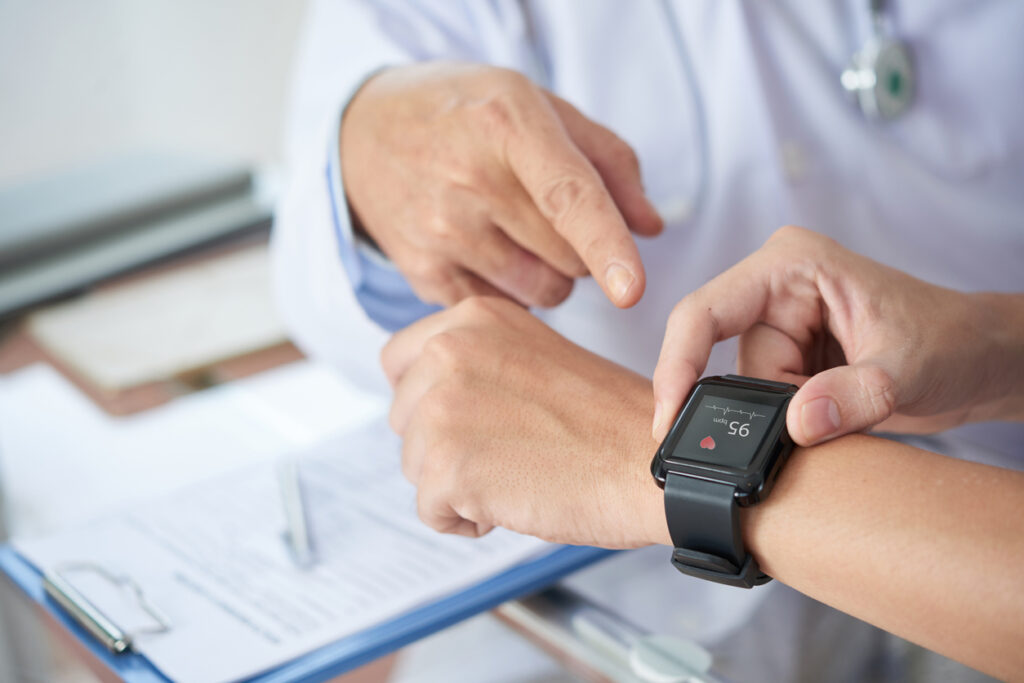There is no question that wearable technology is here to stay. These devices are having a definite impact on wellbeing, helping businesses across the world help to keep their employees healthy. Here, we are going to look at the specific ways wearable technology is helping to improve wellbeing, while also discussing ways in which HR systems can utilise the data these devices collect.
How does wearable technology improve wellbeing?
Many employers are debating whether or not to embrace wearable technology, rolling out these smart devices to their employees. Some might expect that the cons would outweigh the pros, with wearable technology proving to be more of a distraction than anything. This has not proved to be the case, however. In fact, research by Office Genie has found that 36% of UK employees report an increase in productivity due to wearables.
In the workplace, the ways in which wearable technology can improve office wellbeing are multiple.
So, if hindering productivity isn’t a worry, what can wearable technology do to improve wellbeing? Wellness programmes are increasingly popular within businesses, with the logic being that a healthy workforce equals not only a happy workforce but also a productive one. With the likes of fitness trackers and smart watches providing all sorts of valuable data, they can help to keep us as individuals cognisant of our health and deduce ways in which we can improve.
The workplace is not the only sphere in which we have seen wearable tech being encouraged – providers of life insurance are also starting to offer wearable tech to count movement and measure general health, offering users cheaper premiums when they demonstrate productivity.
Wearable technology can help improve wellbeing in numerous ways, from improving fitness with Fitbits, compression shirts that warn the user when they are in danger of pulling a muscle, heart rate monitors, detectors that alert emergency services when someone takes a fall and many other items.
The benefits of wearable technology in the workplace
In the workplace, the ways in which wearable technology can improve office wellbeing are multiple. Apple watches are a popular item and can alert workers who have been stationary for too long, giving them a chance to get up and stretch their legs.
Being stationary for prolonged periods impacts everything from weight to anxiety and depression. Public Health England says that standing up for two hours a day in the office can potentially help improve productivity and profitability, as the risk of sickness will be reduced.
Wearable technology has already proven itself to be more than just a fad, helping employers across sectors to understand the wellbeing of their workforce in areas such as nutrition, stress levels, and exertion.
Absence through sickness in the UK costs the economy £1.4 billion a year and severely impacts the productivity of individual businesses, especially around peak times. Failure of employees to look after their health certainly contributes to this.
This is why so many companies are putting wellbeing at the heart of their operations, implementing various programmes to help support employees. Fitness trackers and the like can help in this regard, encouraging employees to monitor physical activity and motivating them to work out.
Many of the accidents that occur at the workplace – especially ones where dangerous equipment is in use – are due to tiredness. Wearable technology can certainly help in this regard by tracking heart rates and also regulating sleep patterns. Having access to this data will allow employees to regulate their sleep and adjust their lifestyles appropriately to prevent future incidents.
How can HR systems analyse and utilise wearable technology data?
There is now a recognised link between employee wellbeing and business performance – an understanding that has grown exponentially with the advent of wearable technology. These smart devices are augmenting the wellbeing of an organisation’s workforce, manifesting in areas such as reduced absence days, which has not only has shown to increase productivity but also employee satisfaction.
Wearable technology has already proven itself to be more than just a fad, helping employers across sectors to understand the wellbeing of their workforce in areas such as nutrition, stress levels, and exertion. The type of data garnered falls under the vast umbrella of employee data known as HR (or people analytics).
With a multidimensional analysis that combines different sources from wearable tech (and other areas), as well as a cogent and solid foundation for your data investigation, actionable HR insights can be gained to move your business forward.
The valuable insight gained from wearable technology about employee wellbeing has achieved parity with traditional HR approaches such as staff turnover metrics, and absentee rates. Many organisations are now putting a priority on wellbeing to help them make crucial business decisions, such as who to promote.
The data is also helping employers tackle the universal dilemma of employee retention, the logic being that if staff feel looked after, cared for and that their employer has their best interest at heart as a result of wellness programmes, they are more likely to be happy in their place of work and less prone to jumping ship at the first opportunity. Reduced turnover equals more productivity, creating winners all around.
Collecting data via devices and analysing it in a way that is meaningful is, of course, the aim of the game. Wellbeing strategies are only as good as the data that fuel them, and the data is only as good as the manner in which it is dissected. Observing fitness and wellbeing data over time is key, as this will highlight any health improvements in the workforce – something that is certainly helpful when attempting to demonstrate a return on investment.
Unlocking wearable data
The key to unlocking the fruits of all that wearable data has to offer is found in defining the questions you are looking to ask and the business outcome that you are hoping to address. What issues are your company, or a particular department, having? What concerns are your employees raising around wellbeing?
Once these questions have been asked, the next step is to assess the impact these issues will have on your business, utilising HR systems and best practices to come to a conclusion.
The violation of privacy is a concern to many, so employers are urged to find the right balance in their desire to achieve employee wellbeing for business gains.
Next, you will want to determine the timeframe you have to investigate the issue and the group (whether that be staff-wide or a select team) that needs analysing. Product launches and new initiatives will be some of the determining factors in such a decision.
The next step is to gather your wearable data, identifying the sources and tech that will provide the information you need, then digging deep into that data to find the answers to your questions and a solution to the issues you are looking to resolve.
With a multidimensional analysis that combines different sources from wearable tech (and other areas), as well as a cogent and solid foundation for your data investigation, actionable HR insights can be gained to move your business forward.
Would employees be happy with this?
With all this being said, it should also be noted that there has been plenty of discussion regarding the proper use of employee data. The violation of privacy is a concern to many, so employers are urged to find the right balance in their desire to achieve employee wellbeing for business gains.
The key concern for employees ‘what will you use my data for?’ A fundamental issues lies with GDPR around the validity of collecting the data. Is the answer clear – that the data will be used to measure performance against sleep data for example, or is the data going to be used for the business to offer me incentives, days off when I have had a stressful period, fewer meetings when I am showing sign of fatigue, or delivering food to my desk when I haven’t eaten for hours?
[cm_form form_id=’cm_65a14c3f5da64′]
Ensuring the security and back-end support for such data is important to demonstrate to employees, helping to put minds at ease. Privacy and security are, of course, important to any business but this is even more the case when it comes to the incredibly personal data taken from wearables.
There is a line with invasive, wearable technology, as with all things in life, but when the proper precautions and transparency measures are taken, there is no question that these new people technology tools will be benefiting employers and their employees for many years to come.
Interested in this topic? Read Wearable technology: what’s the impact on workplace wellbeing?







